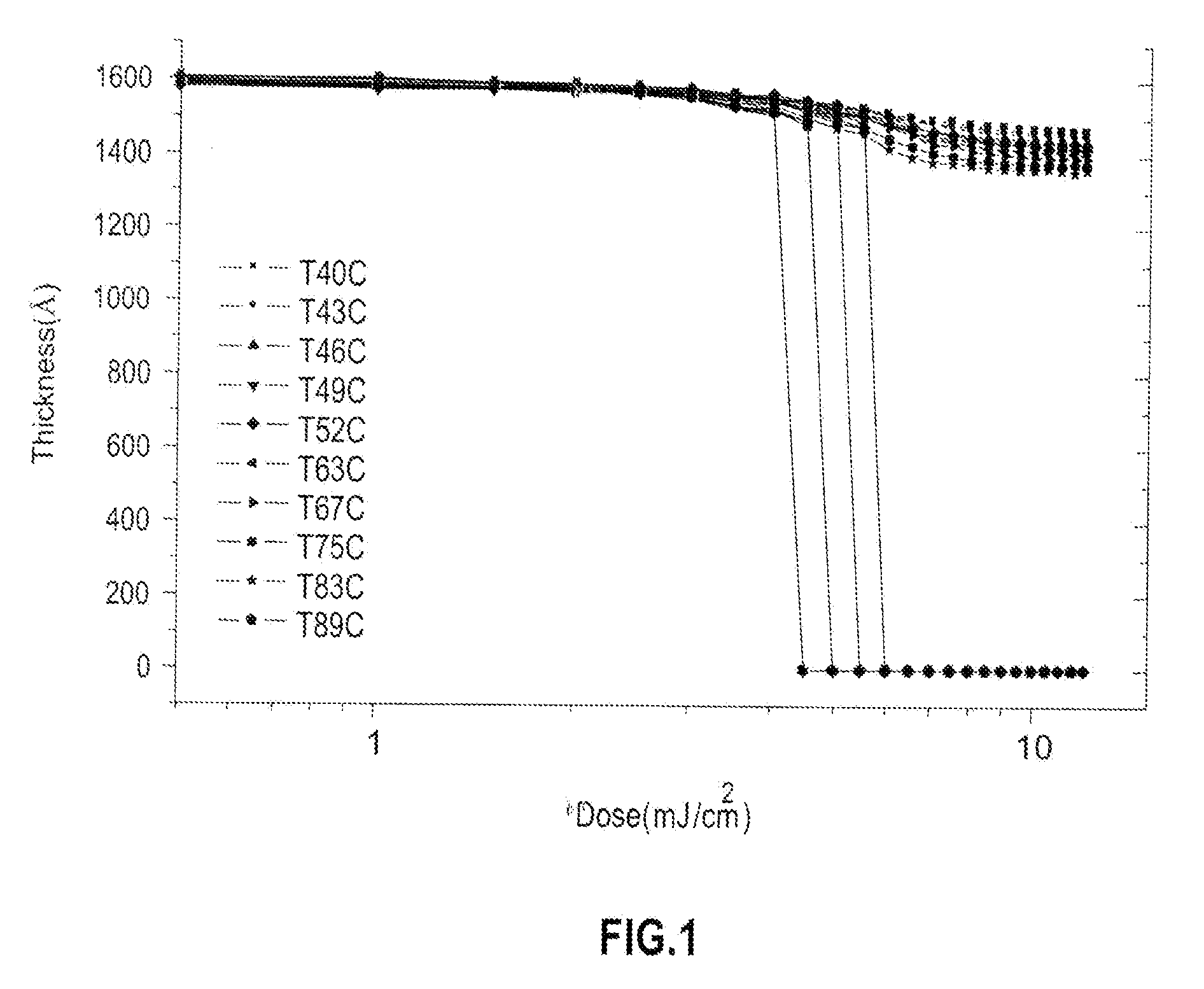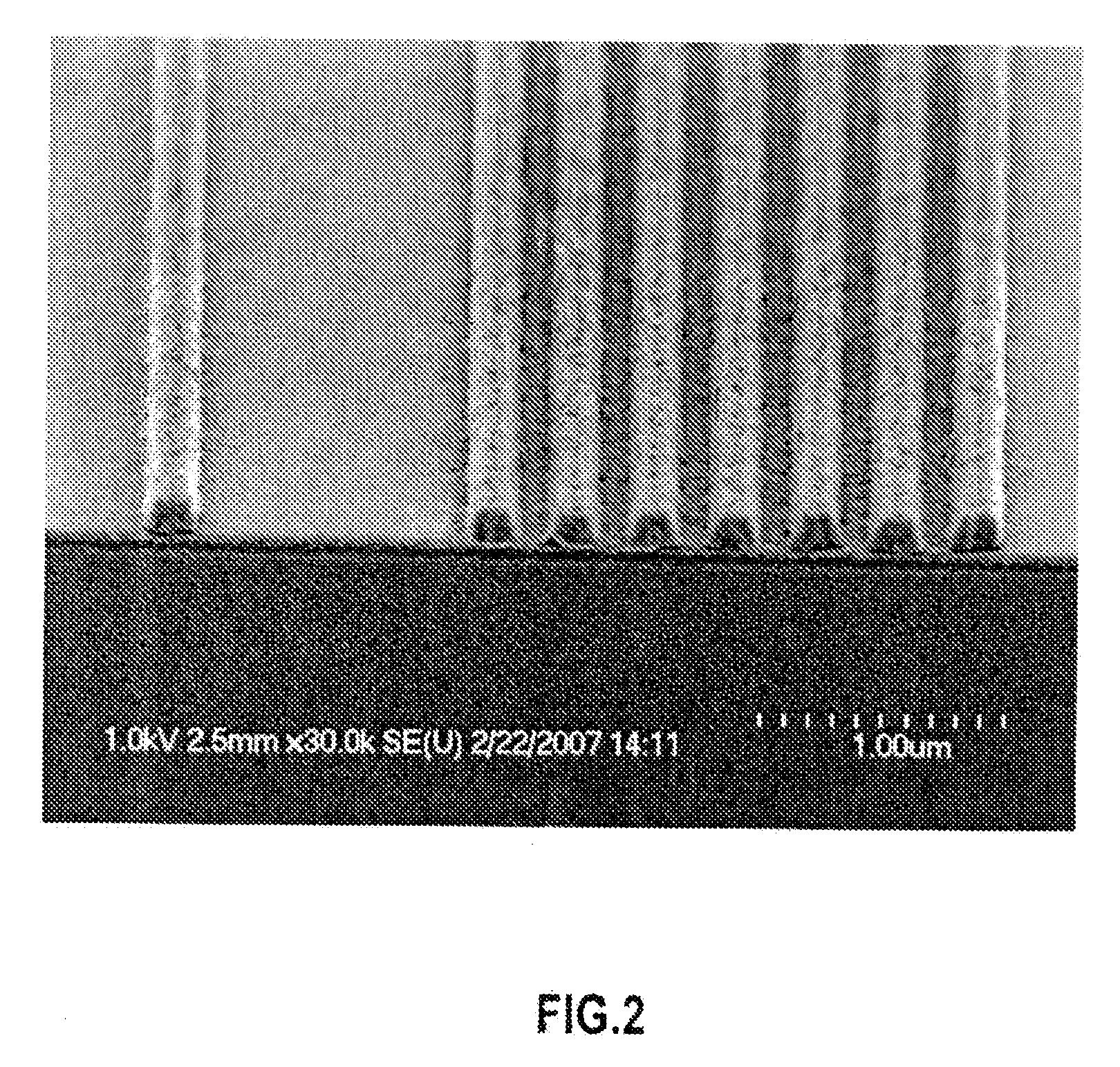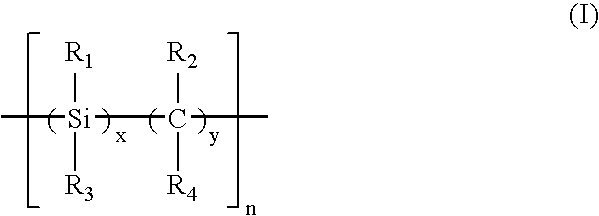Functionalized carbosilane polymers and photoresist compositions containing the same
- Summary
- Abstract
- Description
- Claims
- Application Information
AI Technical Summary
Benefits of technology
Problems solved by technology
Method used
Image
Examples
example 1
[0066]Allylmalonie acid di-tetrahydropyranyl ester was prepared. Allylmalonic acid (7.21 grams, 0.05 mole), 3,4-dihydro-2H-pyran (16.82 g, 0.20 mole), and dichloromethane (50 ml) were placed in a round bottom flask equipped with a magnetic stirrer, nitrogen inlet, and a water condenser. Pyridine p-toluenesulfonate (300 mg) was added to this mixture and stirred at room temperature for 3 hours. According to the IR spectrum of the reaction product, the reaction was complete. The reaction mixture was washed with 2×100 ml saturated sodium bicarbonate solution followed by 100 ml brine and was dried over anhydrous magnesium sulfate. The volatiles were removed in a rotary evaporator and the residue was dried under vacuum at room temperature. The NMR spectrum of the residue indicated that it contained only the desired product.
example 2
[0067]In this example, poly(carbomethylsilane) partially substituted with propylmalonic acid di-tetrahydropyranyl ester of formula (V) was prepared from the allylmalonic acid di-tetrahydropyranyl ester produced in accordance with Example 1.
[0068]Polycarbomethyisilane (Aldrich, Mw˜800) (1.16 g), allylmalonic acid di-tetrahydropyranyl ester (4.68 g, 0.015 mole), and tetrahydrofuran (THF) (5 ml) were placed in a round bottom flask equipped with a magnetic stirrer, nitrogen Inlet, and a water condenser. Platinum(0)-1,3-divinyl-1,1,3,3-tetramethyldisiloxane complex in xylene (0.25 ml) was added to this mixture and heated at 80-90° C. for 2 hours. Afterwards, another portion of the catalyst, platinum(0)-1,3-divinyl-1,1,3,3-tetramethyidisiloxane complex in xylene (0.25 ml), was added and heated at 80-90° for 2 more hours. The solution was allowed to cool to room temperature and added drop wise into 200 ml HFE-7100 (Ultra Pure Solutions, Inc.). The precipitated polymer was filtered through ...
example 3
[0069]In this example, allylmalonic acid di-α-methyl-γ-butyrolactone ester was prepared. Allylmalonic acid (7.21 grams, 0.05 mole), α-angelicalactone (16.82 g, 0.20 mole), and dichloromethane (50 ml) were placed in a round bottom flask equipped with a magnetic stirrer, nitrogen inlet, and a water condenser. Pyridine / p-toluenesulfonate (300 mg) was added to this mixture and heated to reflux for 19 hours. According to the IR spectrum of the reaction product, the reaction was complete. The reaction mixture was washed with 2×100 ml saturated sodium bicarbonate solution followed by 100 ml brine and was dried over anhydrous magnesium sulfate. The volatiles were removed at 40° C. under high vacuum. The NMR spectrum of the residue indicated that it contained only the desired product.
PUM
| Property | Measurement | Unit |
|---|---|---|
| Wavelength | aaaaa | aaaaa |
| Wavelength | aaaaa | aaaaa |
| Wavelength | aaaaa | aaaaa |
Abstract
Description
Claims
Application Information
 Login to View More
Login to View More - R&D Engineer
- R&D Manager
- IP Professional
- Industry Leading Data Capabilities
- Powerful AI technology
- Patent DNA Extraction
Browse by: Latest US Patents, China's latest patents, Technical Efficacy Thesaurus, Application Domain, Technology Topic, Popular Technical Reports.
© 2024 PatSnap. All rights reserved.Legal|Privacy policy|Modern Slavery Act Transparency Statement|Sitemap|About US| Contact US: help@patsnap.com










